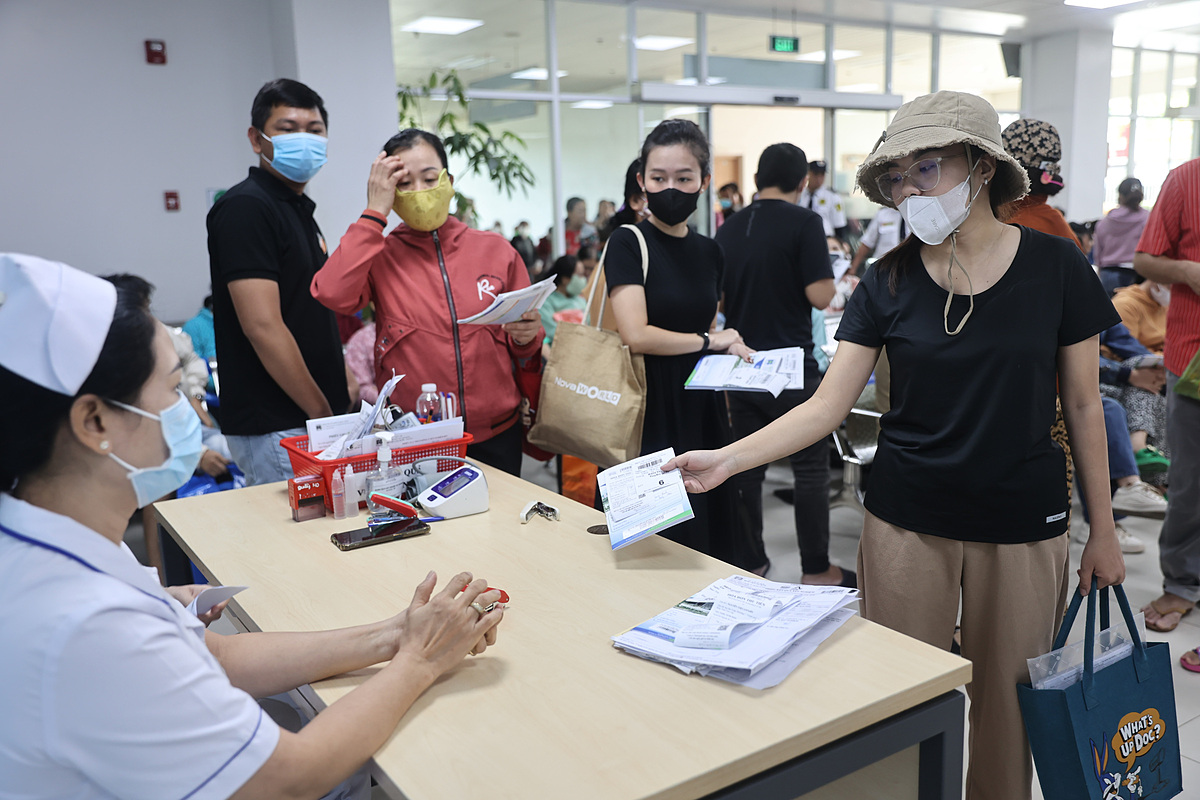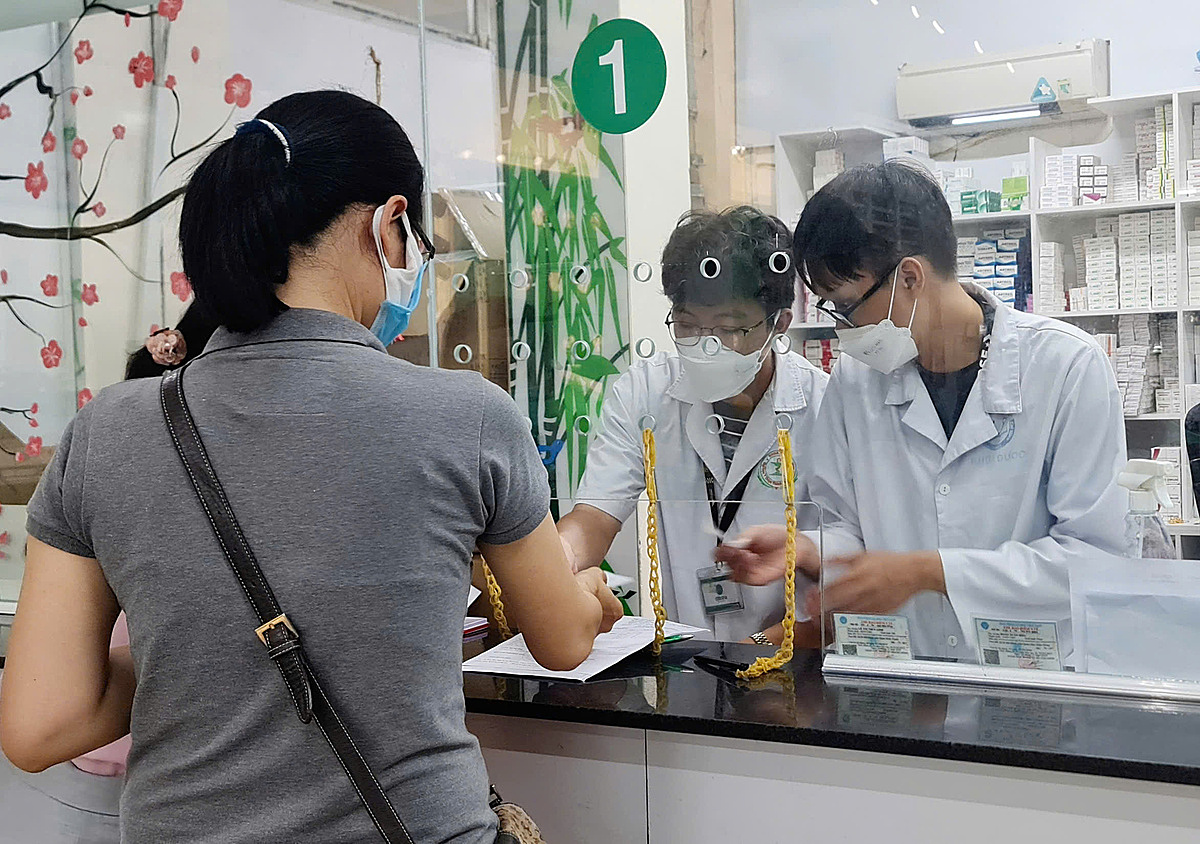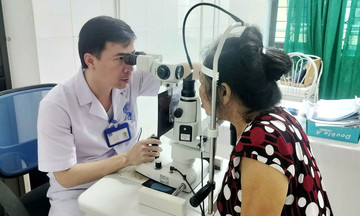At Binh Dan Hospital, tests revealed that Thuong had stage 3 chronic kidney disease, hypertension, suspected diabetes, and dyslipidemia. After three months of medication, her glomerular filtration rate and other indicators did not improve. She then went to Cho Ray Hospital for further examination, which yielded similar results. Doctors there recommended hospitalization for a kidney biopsy to determine the cause.
Having spent over 15 million VND on examinations not covered by her health insurance due to being out-of-network, Thuong returned to her registered healthcare provider in Dong Nai to request a transfer to Cho Ray Hospital. Due to the complexity of her condition and multiple underlying diseases, the local hospital approved the transfer to the higher-level facility. This transfer brought her treatment within the network, making her subsequent medical expenses significantly lower, costing only a few hundred thousand VND per visit.
"I have to live with this chronic illness and have monthly checkups. Fortunately, now that I've transferred, my health insurance covers the treatment, which relieves the financial burden," she said.
 |
Patients waiting for medical examination at a hospital in Ho Chi Minh City. Photo: Quynh Tran |
Doctor Tran Van Khanh, Director of Le Van Thinh Hospital (Ho Chi Minh City), explained that health insurance is considered "out-of-network" when a cardholder seeks medical treatment at a facility other than their registered one without a proper transfer document. Out-of-network treatment can result in reduced coverage or no coverage at all, especially for outpatient services.
Under the new Law on Medical Examination and Treatment, effective 1/1/2025, the healthcare system is divided into three professional levels: Primary - Basic - Specialized, replacing the previous four levels of central - provincial - district - commune. Patient benefits and health insurance coverage vary depending on the level.
In certain cases, patients are not considered out-of-network even if they seek treatment at a different facility than their registered one, and they still receive full benefits. This applies to emergency cases at any facility, inpatient treatment at any basic-level facility nationwide, and treatment at any basic or specialized level facility before 1/1/2025 that was designated as a district-level facility by the competent authority. For example, all patients visiting Le Van Thinh Hospital are considered in-network and receive full health insurance benefits.
Those working, studying, or temporarily residing in a different locality for less than 12 months are also entitled to these benefits when seeking treatment at a facility of the same or equivalent level as their registered one. Previously, individuals working in a different province would not receive health insurance coverage if they sought treatment outside their registered locality. This created difficulties and disadvantages for many patients.
Additionally, individuals seeking treatment at primary healthcare facilities (commune health stations, military-civilian medical clinics, district health centers providing medical examination and treatment), or receiving inpatient care at basic-level facilities, also receive 100% coverage. Ethnic minorities and individuals from poor households living in extremely difficult socio-economic areas, as well as those residing on islands and island districts, also receive 100% coverage for inpatient treatment at specialized-level facilities.
The amended Law on Health Insurance, effective 1/7, also stipulates 100% coverage for patients seeking treatment at basic or specialized level facilities for certain rare, serious, or complex diseases requiring surgery or advanced techniques, encompassing 62 specific conditions. Patients diagnosed with these conditions at the primary level can directly access specialized care without a referral. Patients seeking treatment at the specialized level who are diagnosed with these conditions also receive immediate coverage from their first visit.
 |
Patients waiting for medication at Le Van Thinh Hospital. Photo: Le Phuong |
If a patient seeks out-of-network treatment at a specialized hospital and does not fall under any of the prioritized categories, they will likely receive no coverage for outpatient treatment. For inpatient treatment, this group typically receives 40% coverage for medications, medical supplies, and services within the insurance list.
Doctors recommend seeking treatment at lower levels first for minor illnesses to receive full benefits. If the condition exceeds the treatment capacity of the lower-level facility, doctors will issue a referral, ensuring that patients receive full insurance coverage at higher-level hospitals. In case of emergencies (loss of consciousness, severe pain, accidents, etc.), patients can be taken to the nearest medical facility and receive 100% health insurance coverage.
Le Phuong












